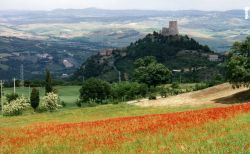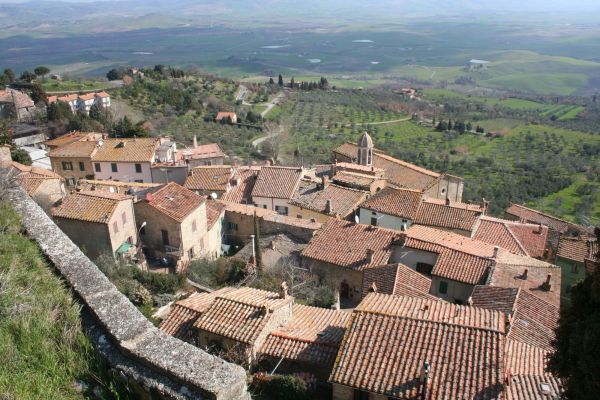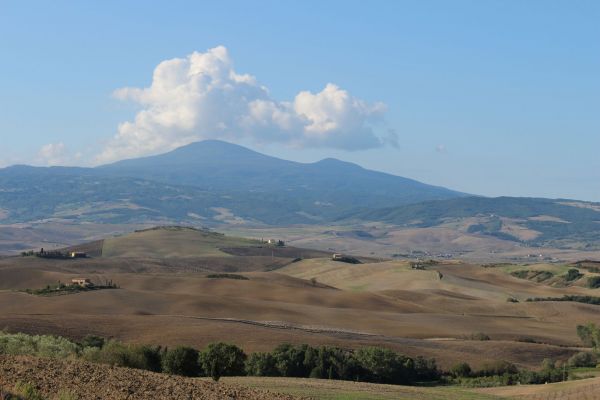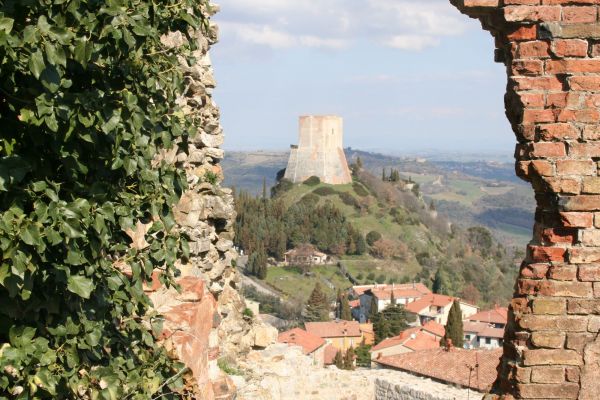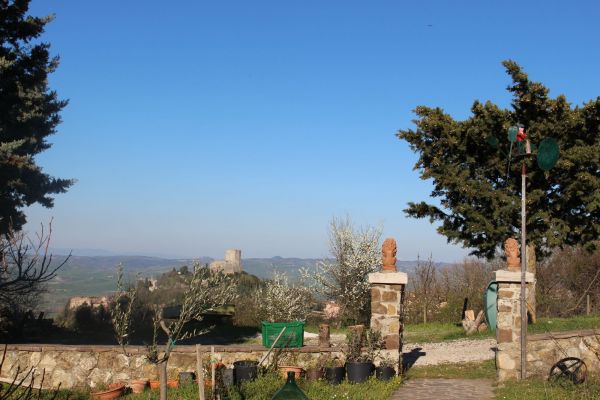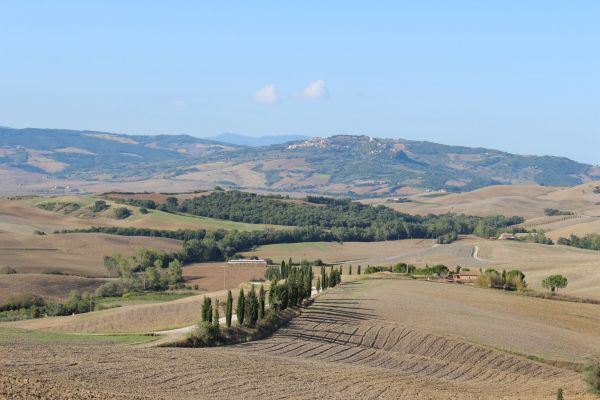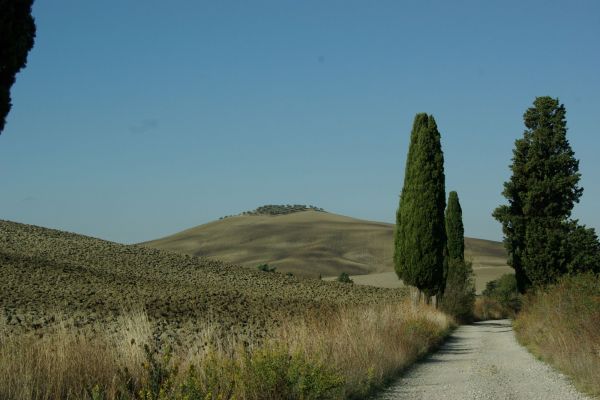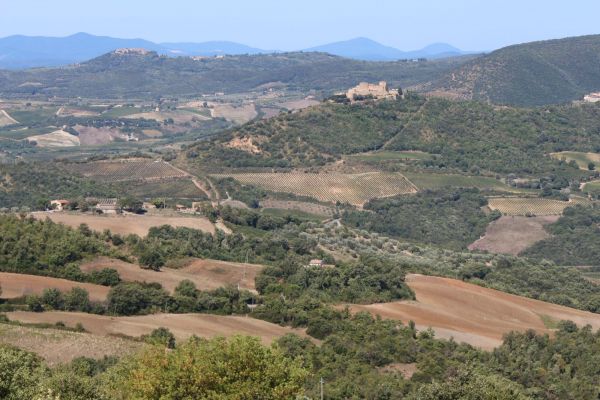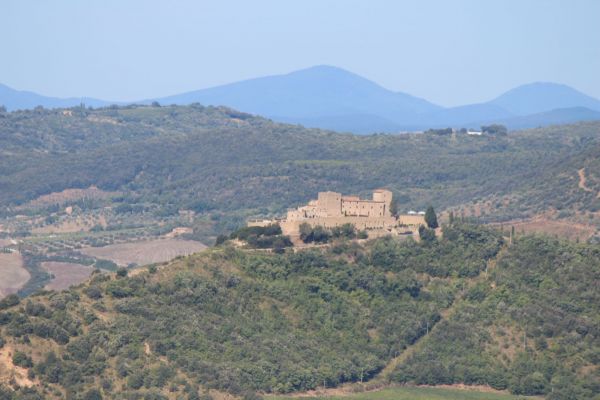Registered office: Bolzano Via del Ronco 39 tel. +39 0471 910212
The area
Val d'Orcia - the area
Val d'Orcia is a broad valley in southern Tuscany that stretches between Siena and Monte Amiata in the province of Grosseto and borders Umbria to the east. The valley owes its name to the eponymous river, the Orcia, which gracefully winds its way through a hilly landscape characterised by vines and cypresses. Medieval villages such as Pienza and Montalcino radiate the typical charm of Tuscany, and in culinary terms, too, the valley has plenty to offer. Along with the exclusive Brunello di Montalcino and wines with the new Orcia DOC designation of origin, visitors can enjoy the traditional Pici pasta with sausage and porcini or taste the famous Pecorino di Pienza cheese.
Municipalities
The Val d'Orcia comprises a total of 5 municipalities in the province of Siena, which together form a conservation area that is rich in art and culture. These are: Castiglione d'Orcia, Montalcino, Pienza, Radicofani and San Quirico d'Orcia. Furthermore, these five municipalities include important parishes such as Contignano, Monticchiello, Bagno Vignoni, Rocca d'Orcia, Campiglia d'Orcia, Bagni San Filippo and Vivo d'Orcia. The valley also encompasses a few towns belonging to the province of Grosseto, such as Montenero d'Orcia and Montegiovi in the district of Castel del Piano. The rolling hills are also home to numerous agriturismi (farms offering accommodation), dreamy country houses and medieval castles with impressive towers.
World Cultural Heritage
Large parts of the Val d'Orcia form a conservation area which was designated a Unesco World Cultural Heritage site on 2nd July 2004. The intact landscape, whose beauty inspired countless Renaissance artists, proved to be the decisive criterion justifying the region's inclusion on the World Heritage list:
Criterion (iv): "The Val d'Orcia is an exceptional example from the Renaissance period that reflects the ideals of an aesthetic landscape to the very highest degree."
Criterion (vi): "The landscape of the Val d'Orcia was celebrated by painters from the Siena School which flourished during the Renaissance. The landscape paintings that depict the people living in harmony with nature are symbolic of the spiritual ideals of the Renaissance and have had a deep and lasting influence on the development of the landscape in the area."
Castiglione d'Orcia
Situated at the heart of the Val d'Orcia, not far from the Via Cassia, the town lies on a hill in the southern foothills of the Monte Amiata and also comprises the parishes of Rocca d'Orcia (with the medieval fortress of Rocca di Tentennano or Tintinnano), Campiglia d'Orcia, Vivo d'Orcia, Ripa d'Orcia (with the castle of the same name), and the thermal baths of Bagni San Filippo.
The Rocca Aldobrandesca viewed from Rocca d'Orcia
The town was first mentioned in the records as long ago as 714, when Castiglione d'Orcia, in those days still known as Petra, was in the possession of the Aldobrandeschi family. In 1252 the municipality won its independence, which it retained for almost a century. In 1274 the town came under the control of the Contea di Santa Fiora and the estates of the Aldobrandeschi family were split up. We know with certainty that in around 1300 Castiglione was already in the possession of the city of Siena, which transferred control of the town to powerful families from the region such as the Piccolomini and the Salimbeni in return for financial considerations. The latter subsequently started their revolt against the Republic of Siena from here. Over the course of the following centuries, Castiglione passed into the possession of the city of Florence, which placed the town under the control of the noble Riario family from Bologna in around 1605.
Monuments and Sights
The most famous monument in the municipal area of Castiglione d'Orcia is without doubt the Rocca di Tentennano. This imposing fortress sits on a limestone crag high above the Val d'Orcia and watches over the medieval gem of Rocca d'Orcia. Between the 9th and 14th centuries, the fortress served as a strategic guard post and was the site of bitter battles between the Salimbeni family and the Republic of Siena, into whose possession the fortress once again fell in 1408. After a further two centuries, during which it continued to be used as a sentry point, in the 16th century another dispute ignited over the fortress, this time between the cities of Siena and Florence. It should be pointed out that in both disputes, the fortress was only conquered due to betrayals. Even if today many inhabitants are convinced that the Rocca di Tentennano is a fixed part of the town of Castiglione d'Orcia, for the sake of accuracy it must be mentioned that both places, even though they were so close in geographical terms, continued to record their own historical events until 1777. This only changed when the municipalities of Rocca and Castiglione were merged in that year.
The Rocca di Tentennano in the parish of Rocca d'Orcia
Another, extremely impressive, fortress is the Rocca Aldobrandesca, which looks directly at the Rocca di Tentennano high above Castiglione d'Orcia. The Piazza il Vecchietta, is another important site in art history terms. It is named after the painter, Lorenzo di Pietro (1412-1480), better known as il Vecchietta, who was born here. The central square in the heart of the town is home to the local town hall, the Palazzo Comunale. The inner courtyard, which is paved with river pebbles, contains a fountain from the 15th century. Inside, the building houses a fresco from the Siena School, showing the Madonna with Child and two saints. The Chiesa di Santa Maria Maddalena and the Pieve dei Santi Stefano e Degna are also worth seeing. The Chiesa di Santa Maria Maddalena is of Romanesque origin and has only recently been restored. The Pieve dei Santi Stefano e Degna is considered to be the most important sacred building in Castiglione d’Orcia. Its interior is Romanesque, whilst the façade dates from the 15th century. The numerous works of art that the church houses include, among others, the Madonna with Child by Simone Martini and the Madonna with Child by Pietro Lorenzetti. Also worth mentioning are the church and grotto of San Filippo Benizi, the Chiesa di San Biagio, the Chiesa della Compagnia di San Giovanni Battista, the Chiesa della Madonna delle Querce, the Chiesa della Madonna delle Grazie di Manno, the Chiesa di San Sebastiano, the Chiesa di San Simeone, the Eremo del Vivo hermitage with the Pieve di San Marcello and the oratory of San Bartolomeo.



